Ovidiu Toader & Justin Orvis Steimer
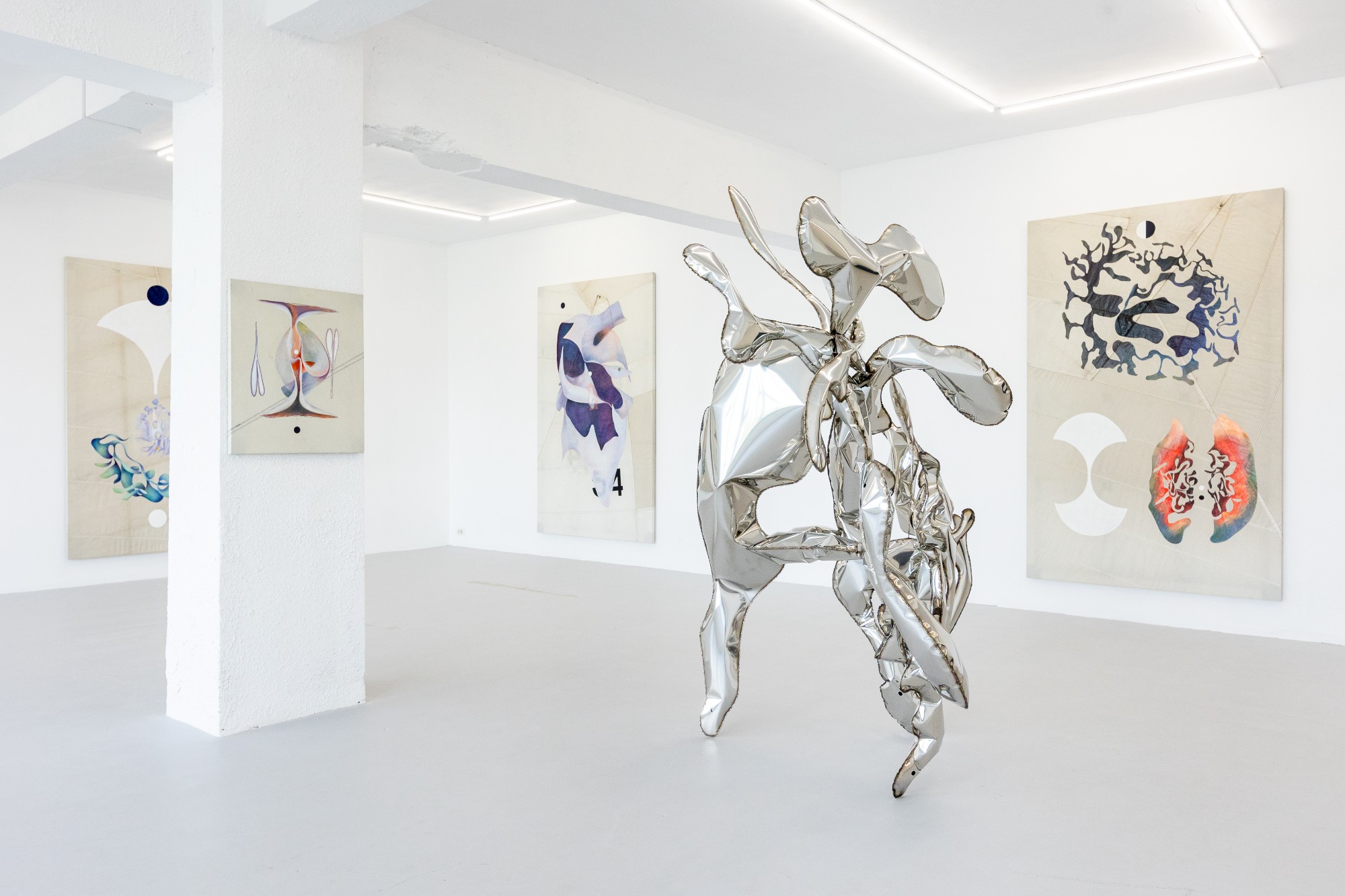
Installation view: Justin Orvis Steimer
& Ovidiu Toader
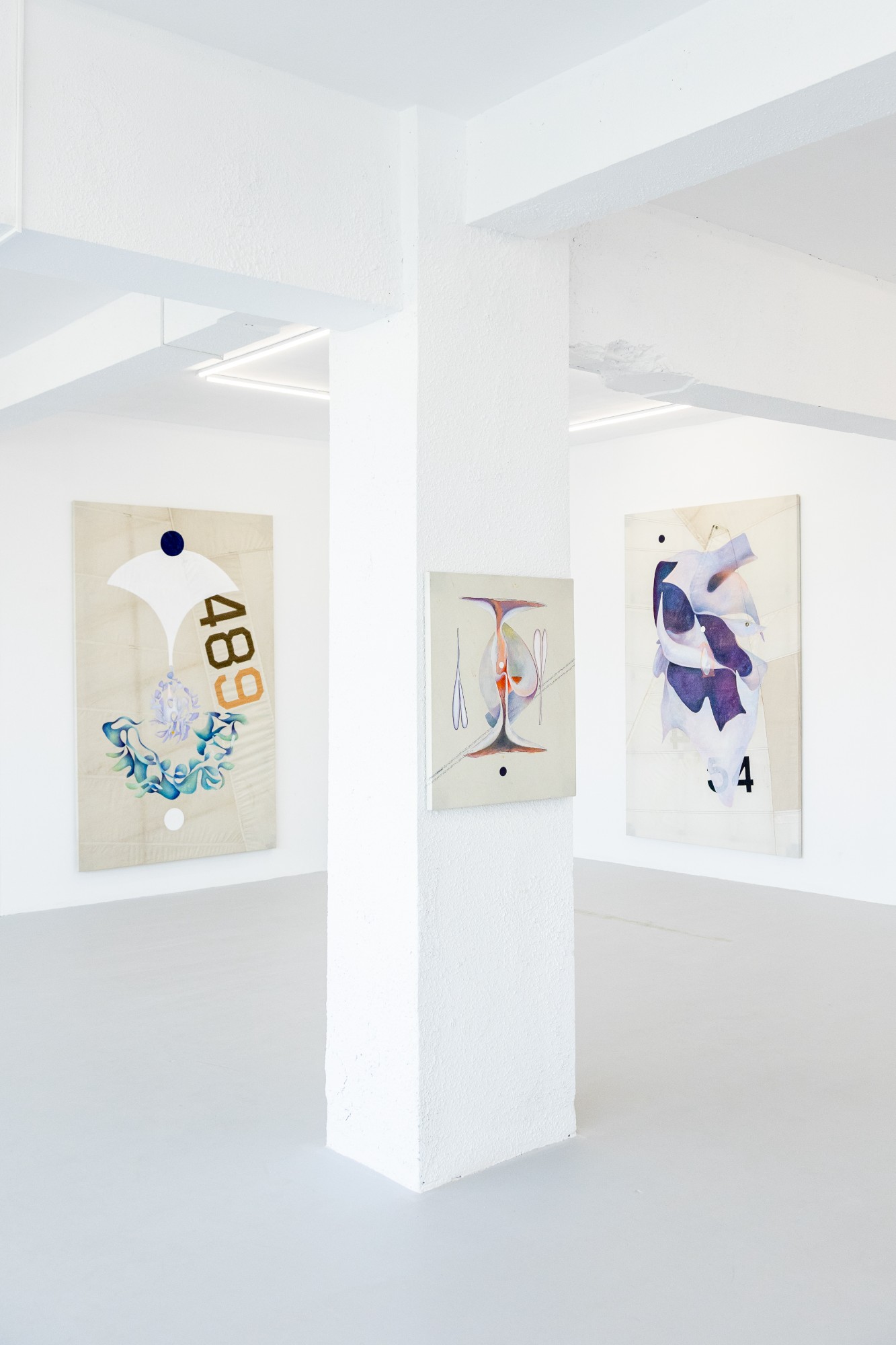
Installation view, Justin Orvis Steimer: Nearly Obvious, 2024; Reference Point, 2024; It Was Their Idea, 2024.
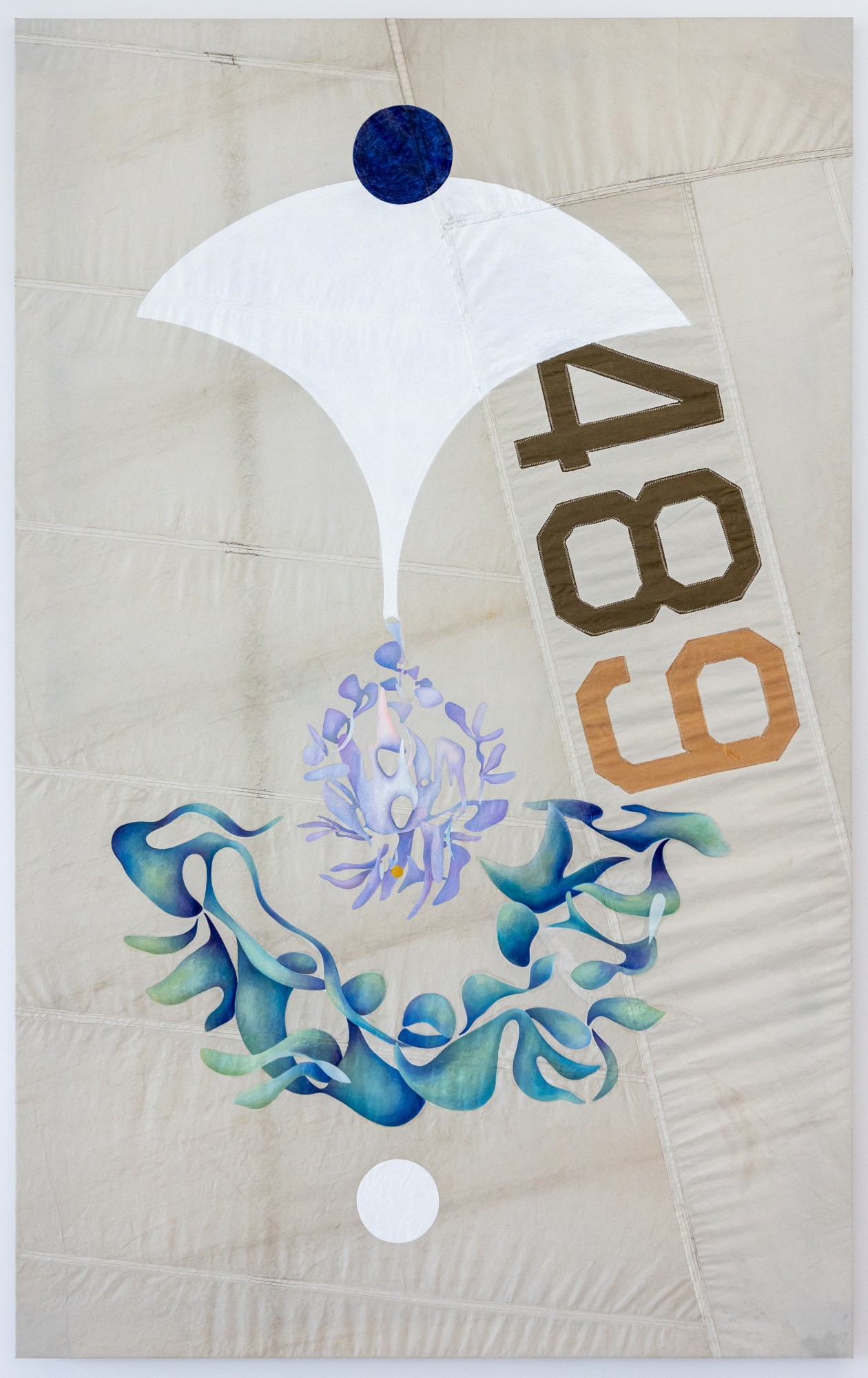
Justin Orvis Steimer,
Nearly Obvious, 2024, oil and acrylic on retired boat sail,
152 × 244 cm
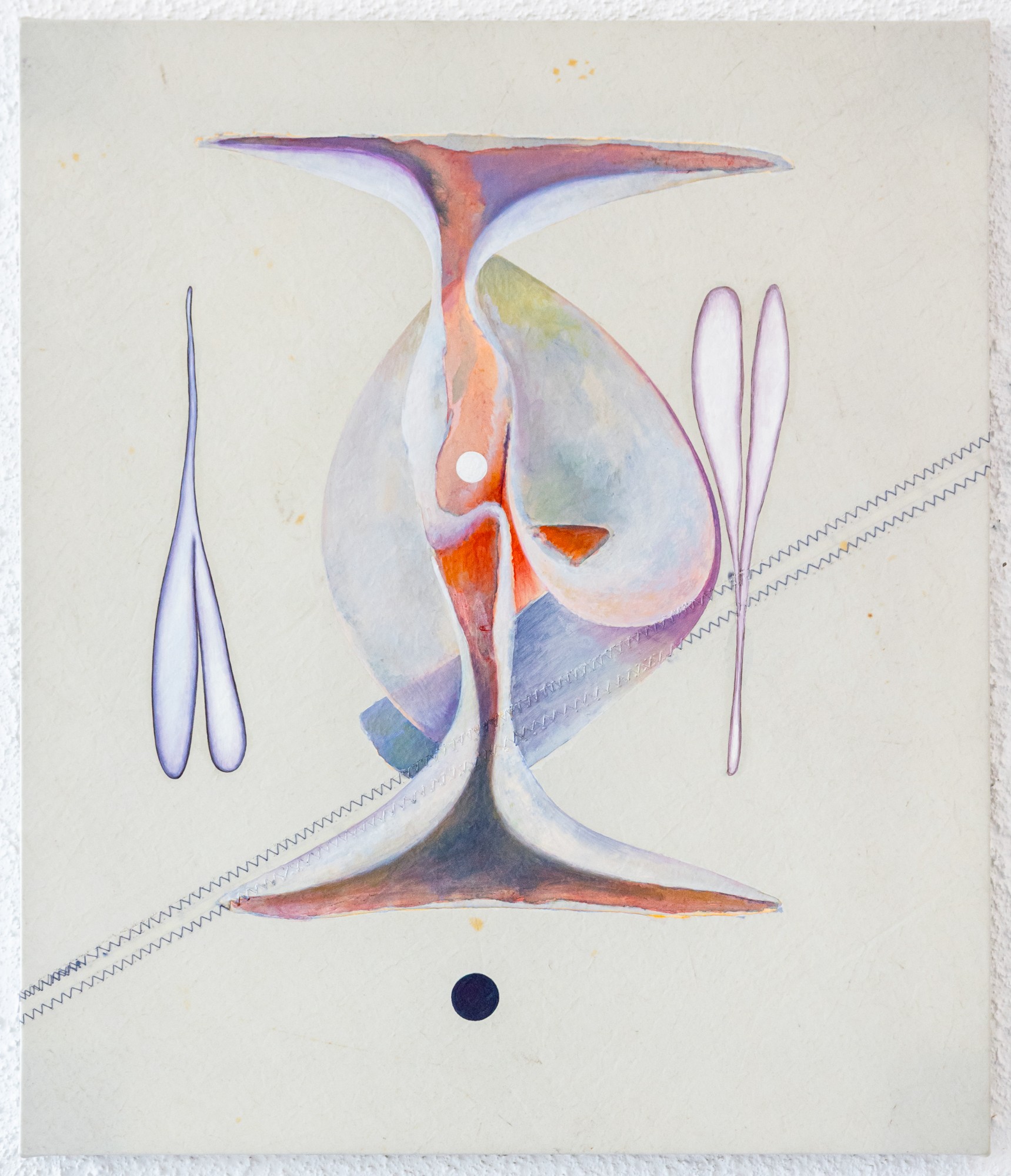
Justin Orvis Steimer, Reference Point, 2024 oil and acrylic
on retired boat sail, 61 × 71 cm
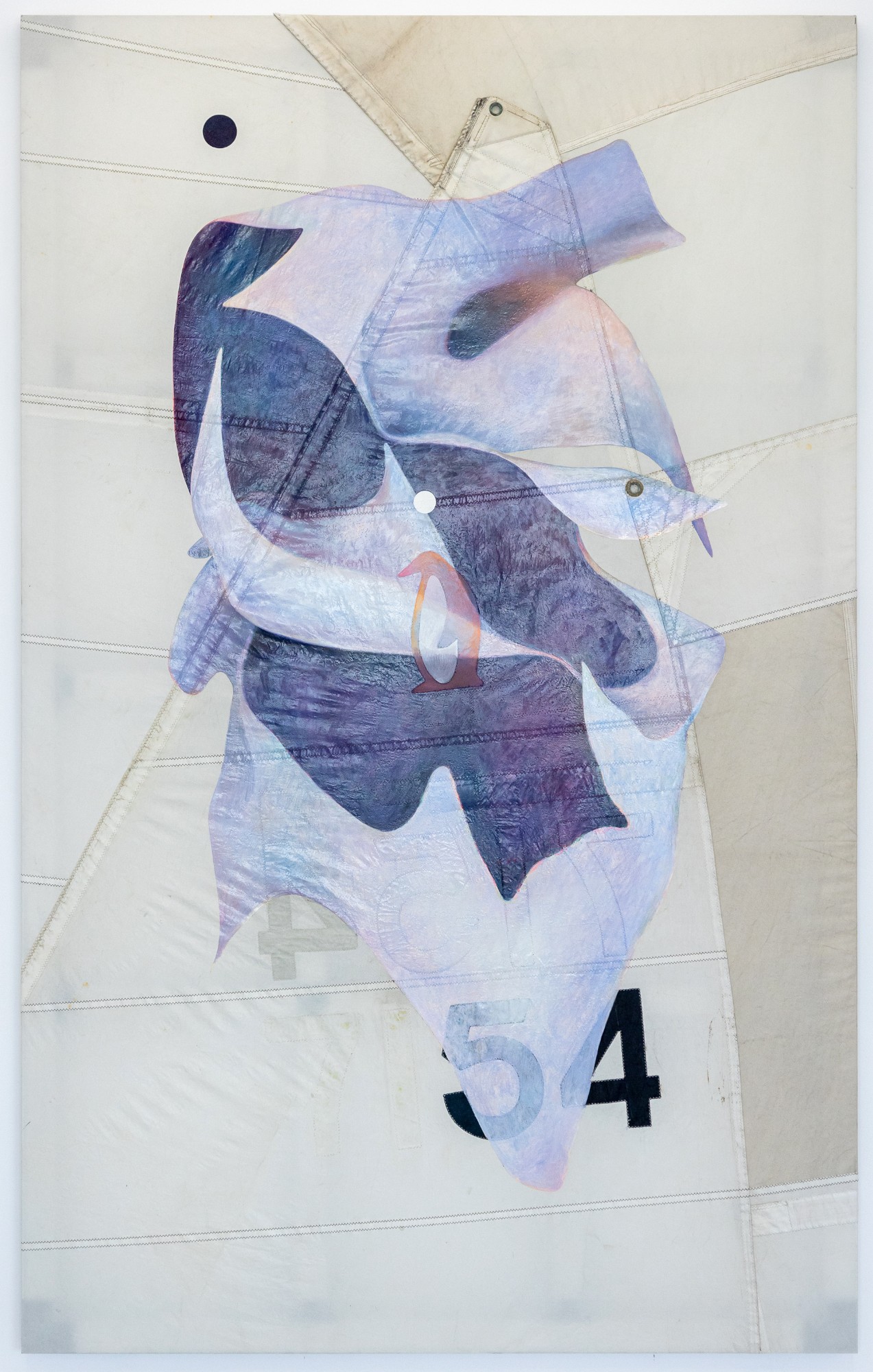
Justin Orvis Steimer, It Was Their Idea, 2024
oil and acrylic on retired boat sail, 152 × 244 cm
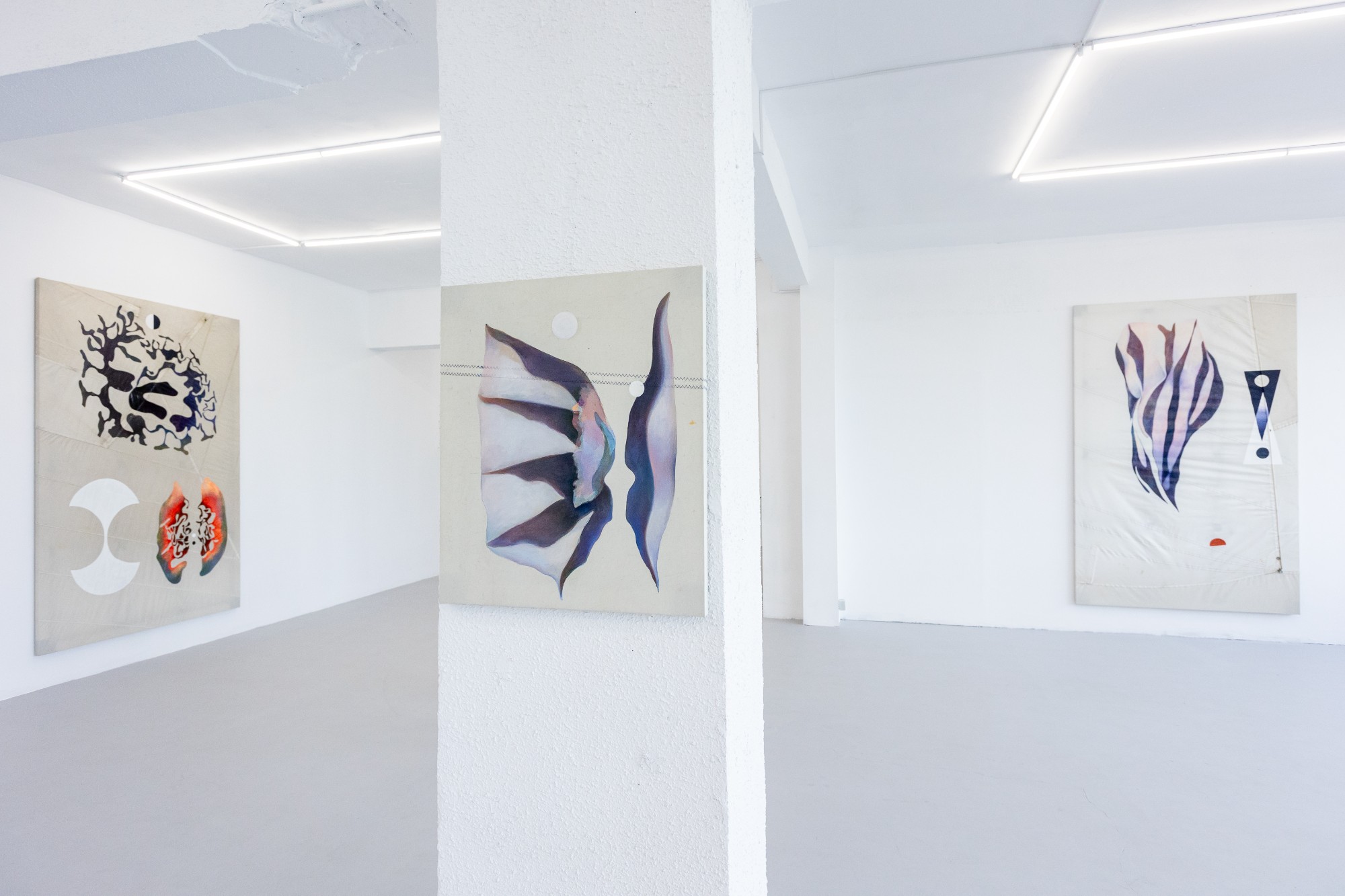
Installation view, Justin Orvis Steimer: Hold The Container, 2024, Subtle Shift, 2024, International Uncertainty, 2024.
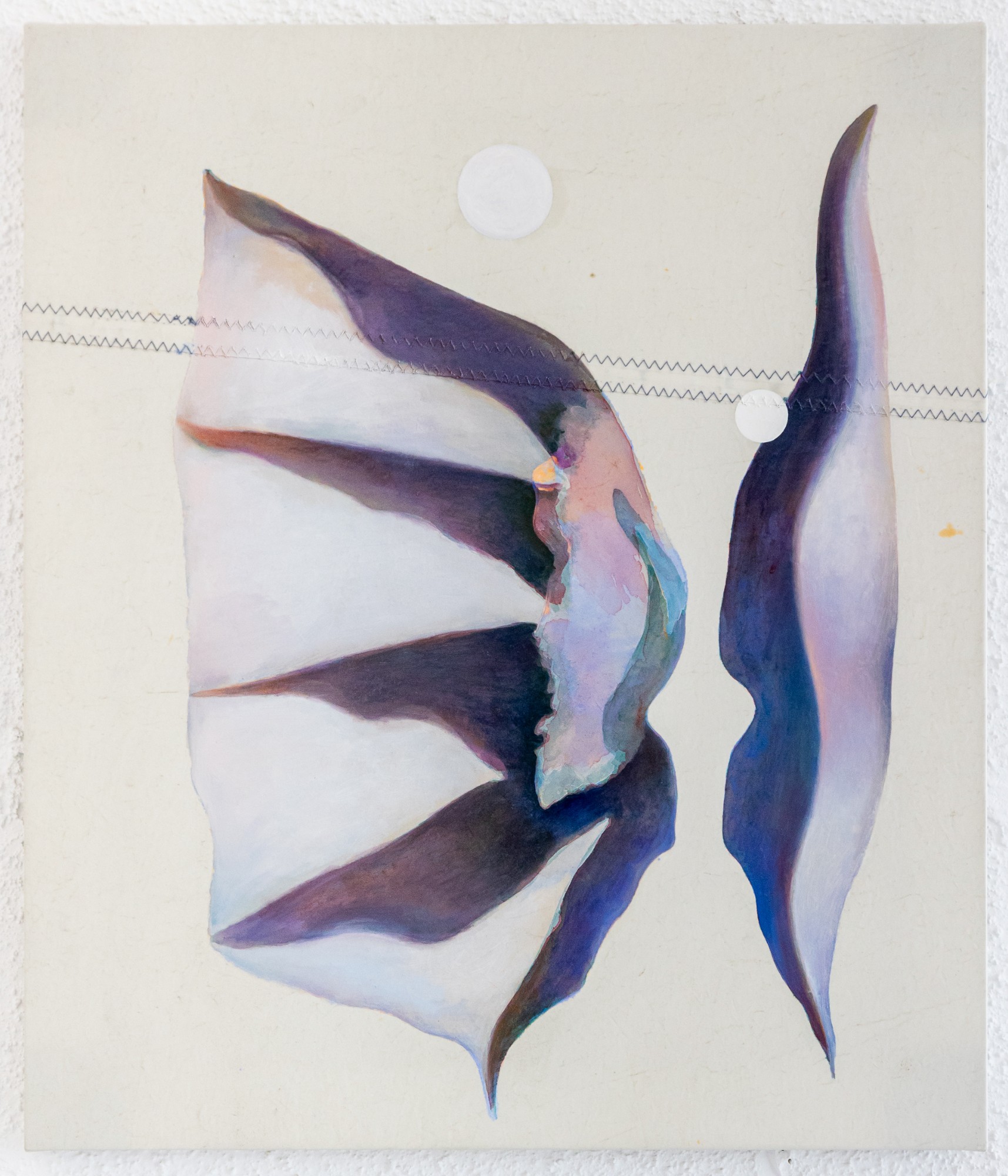
Justin Orvis Steimer, Subtle Shift, 2024 oil and acrylic
on retired boat sail, 61 × 71 cm
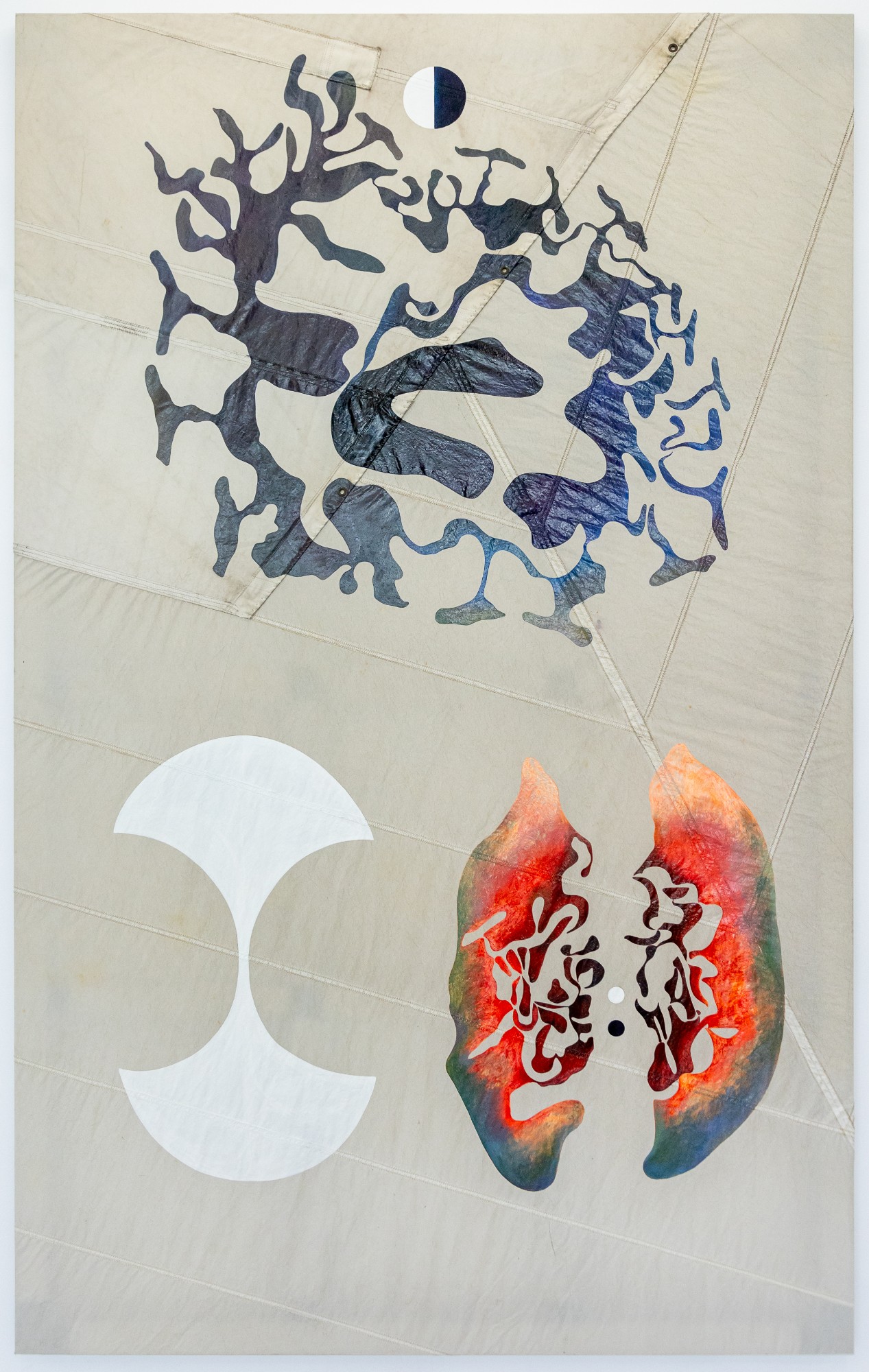
Justin Orvis Steimer, Hold The Container, 2024,
oil and acrylic on retired boat sail, 152 × 240 cm
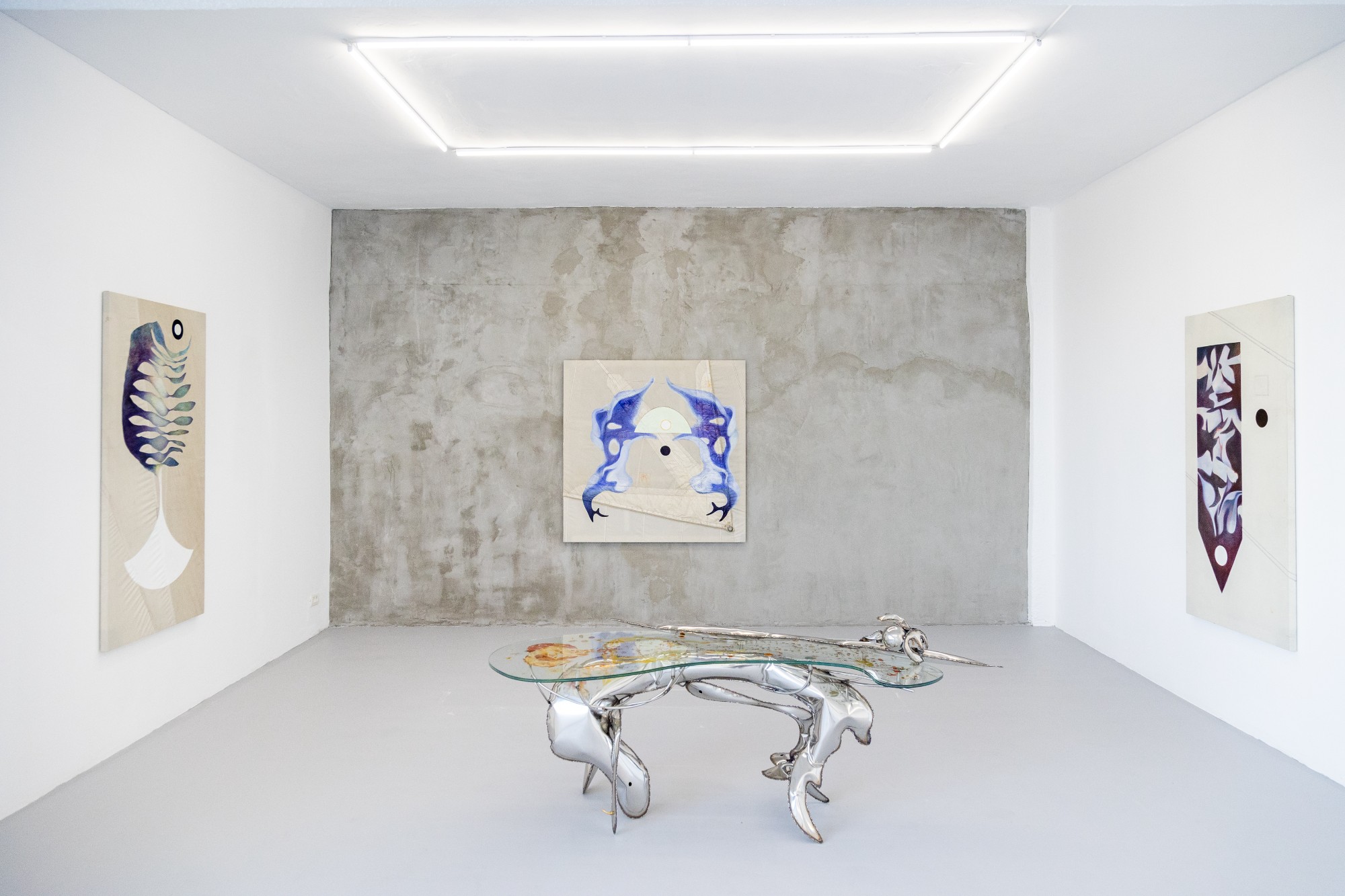
Installation view: Justin Orvis Steimer
& Ovidiu Toader
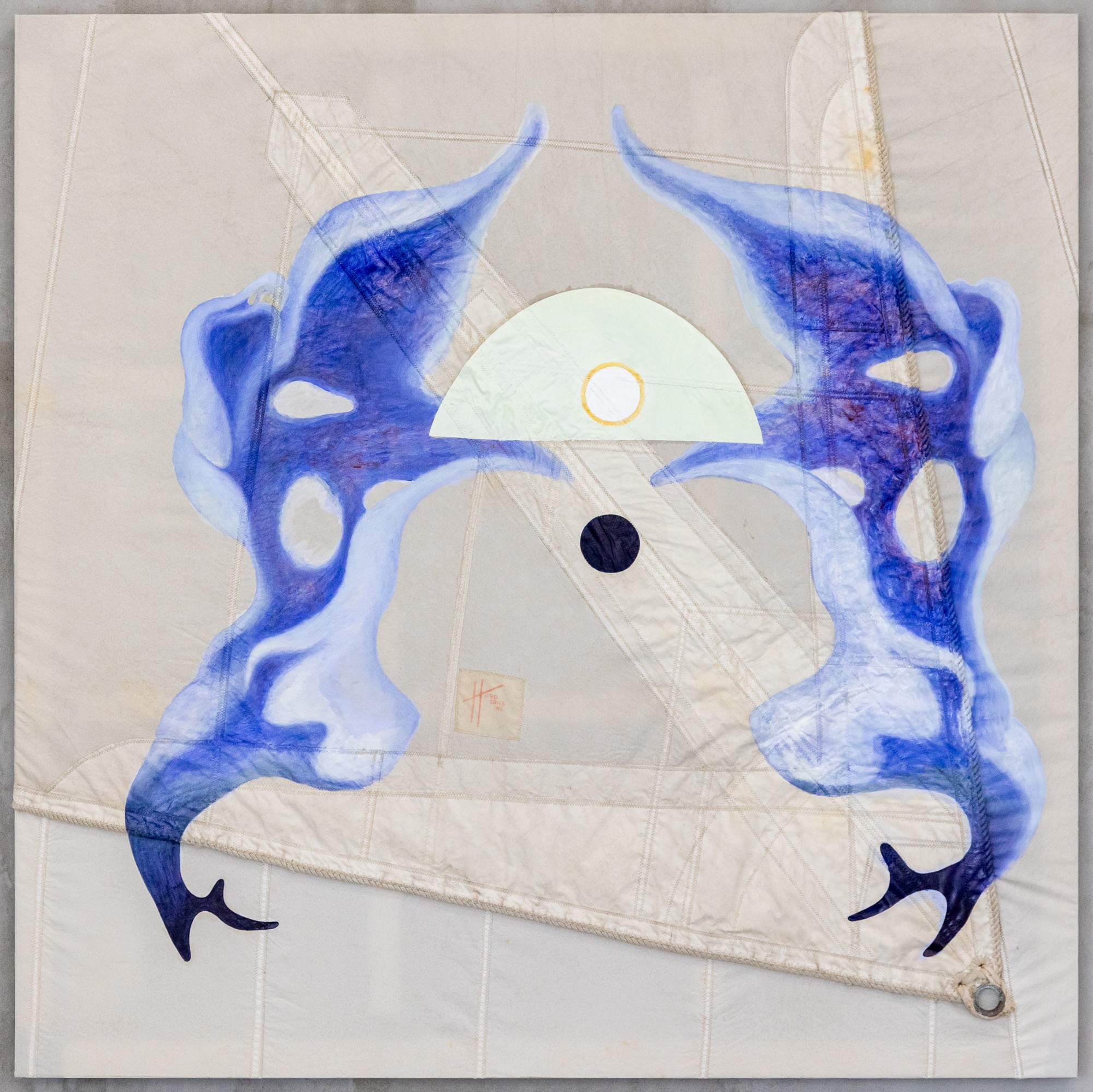
Justin Orvis Steimer, Human Error, 2024, oil and acrylic
on retired boat sail, 140 × 140 cm
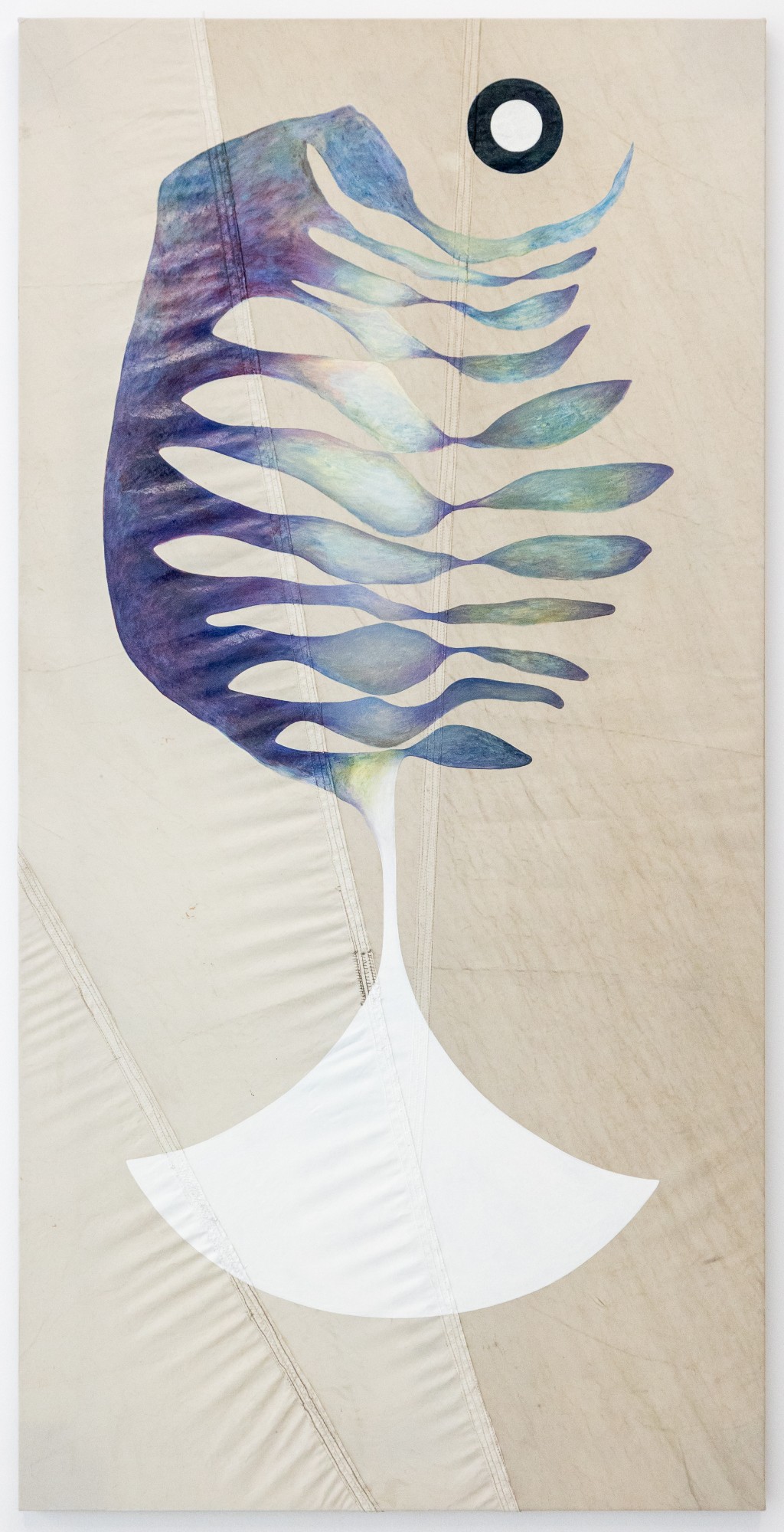
Justin Orvis Steimer, Vector Sync, 2024, oil and acrylic on retired boat sail, 84 × 167 cm
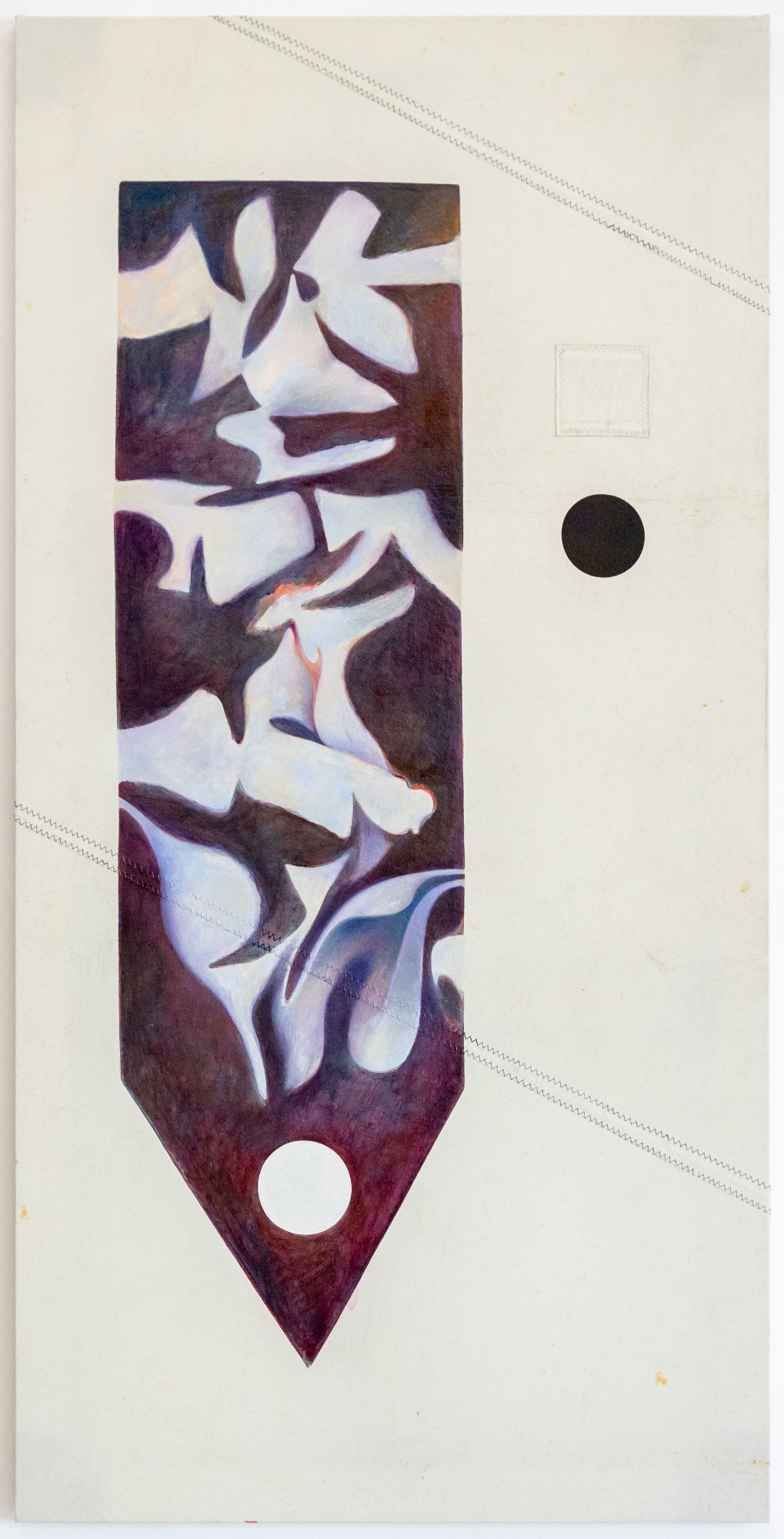
Justin Orvis Steimer, Love The Neighbor, 2024,
oil and acrylic on retired boat sail, 84 × 167 cm
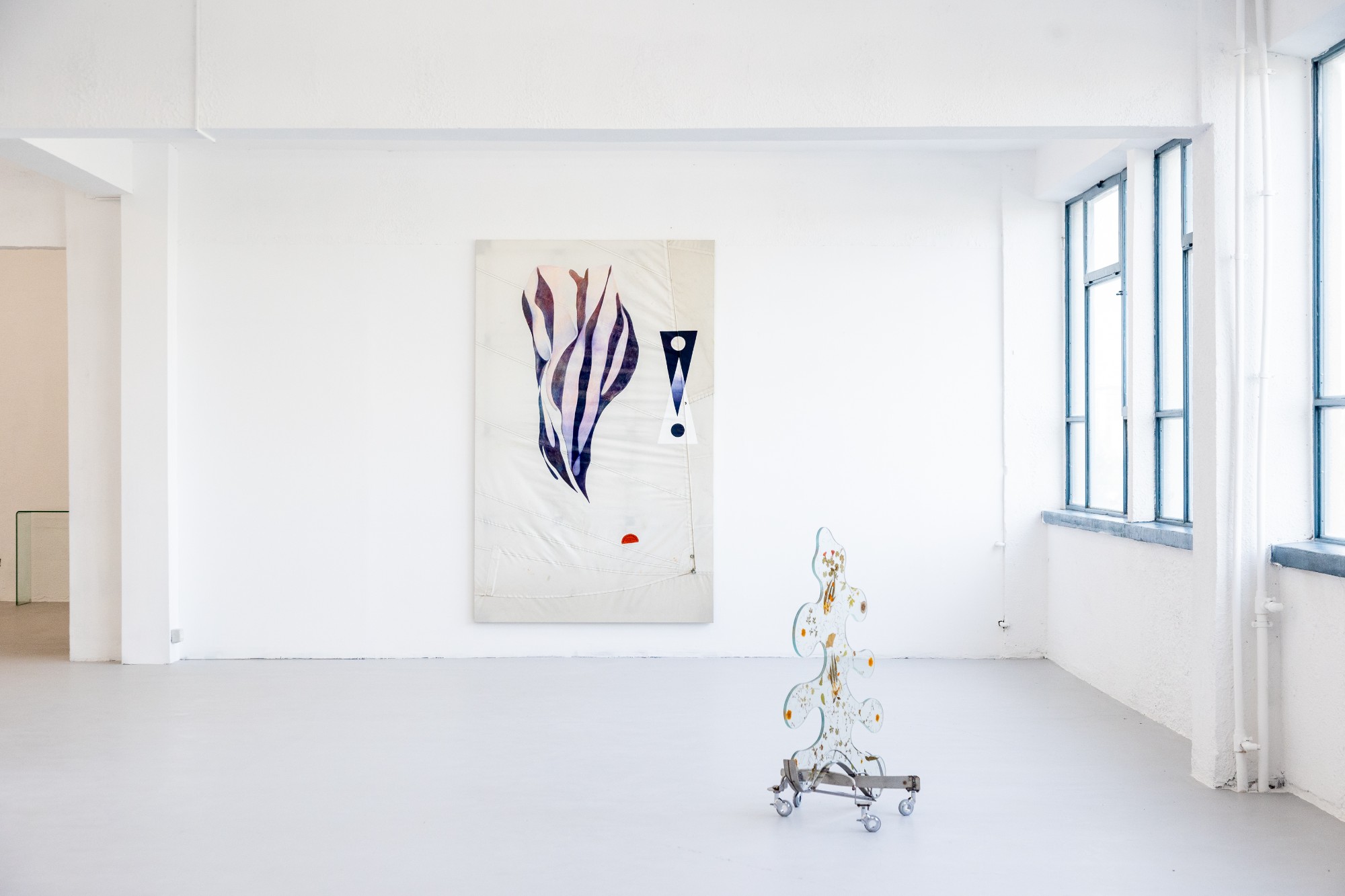
Installation view: Justin Orvis Steimer
& Ovidiu Toader
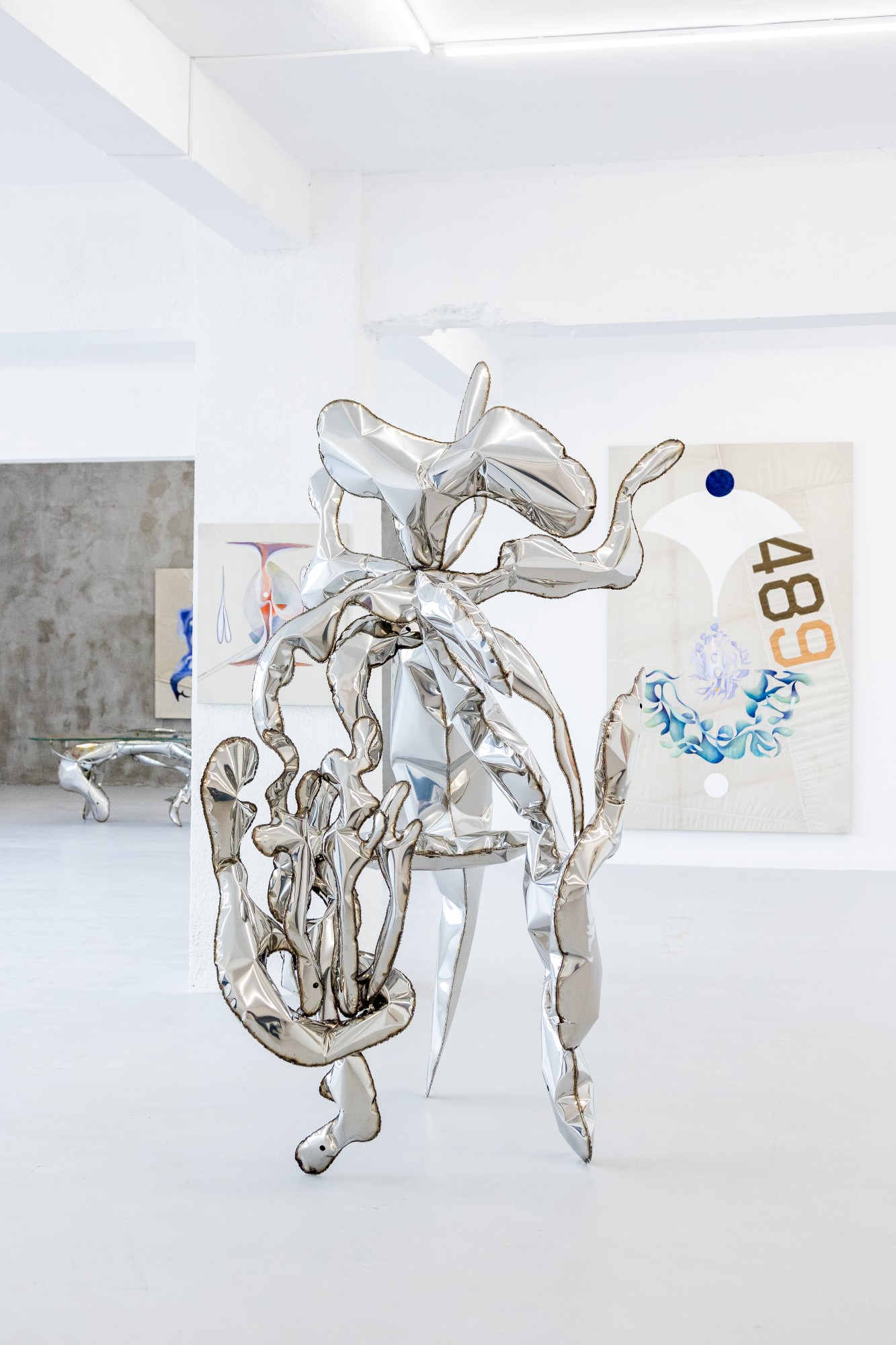
Ovidiu Toader, Queen, 2025, stainless steel,
230 × 125 × 125 cm
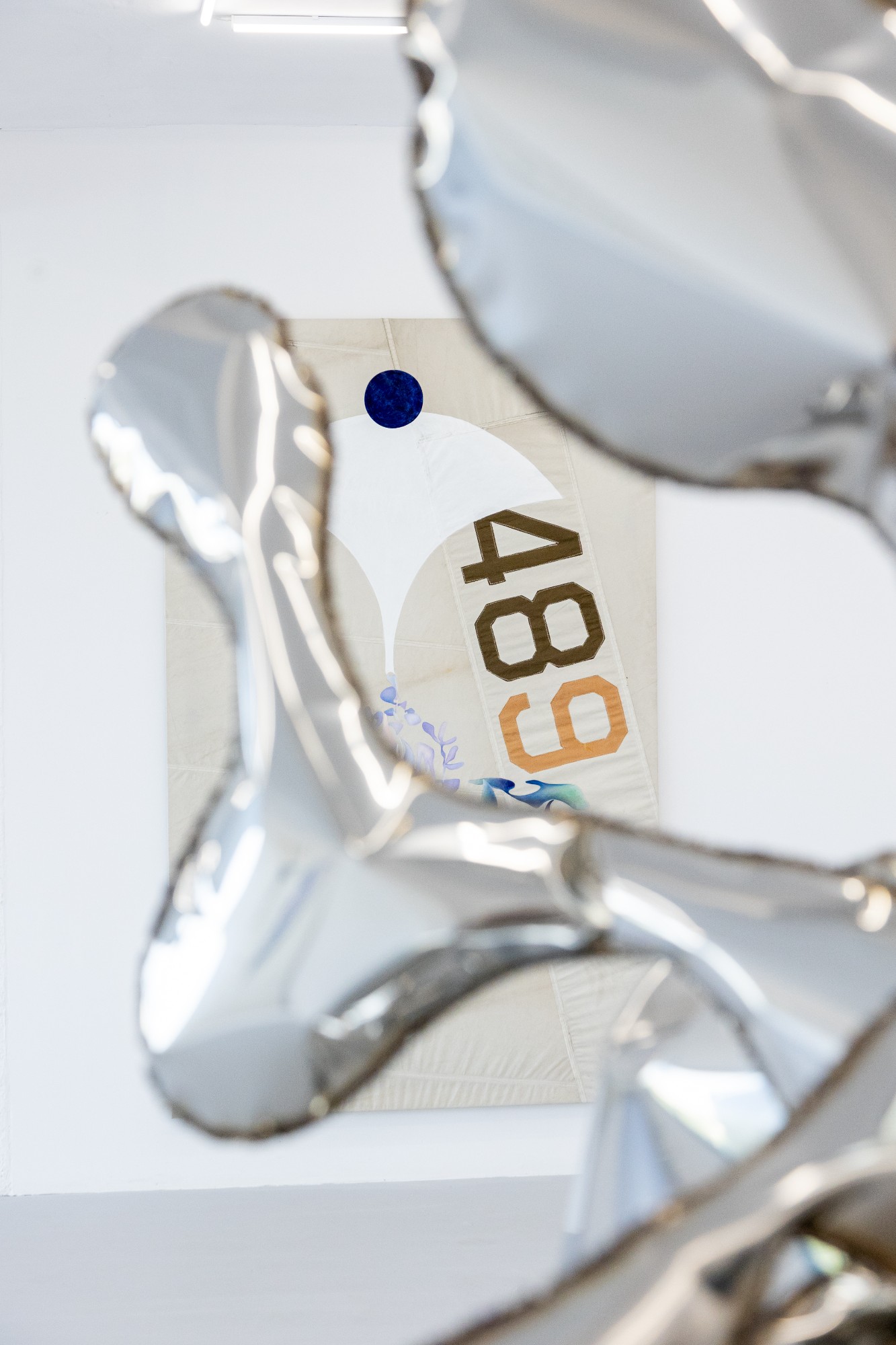
Installation view: Justin Orvis Steimer
& Ovidiu Toader
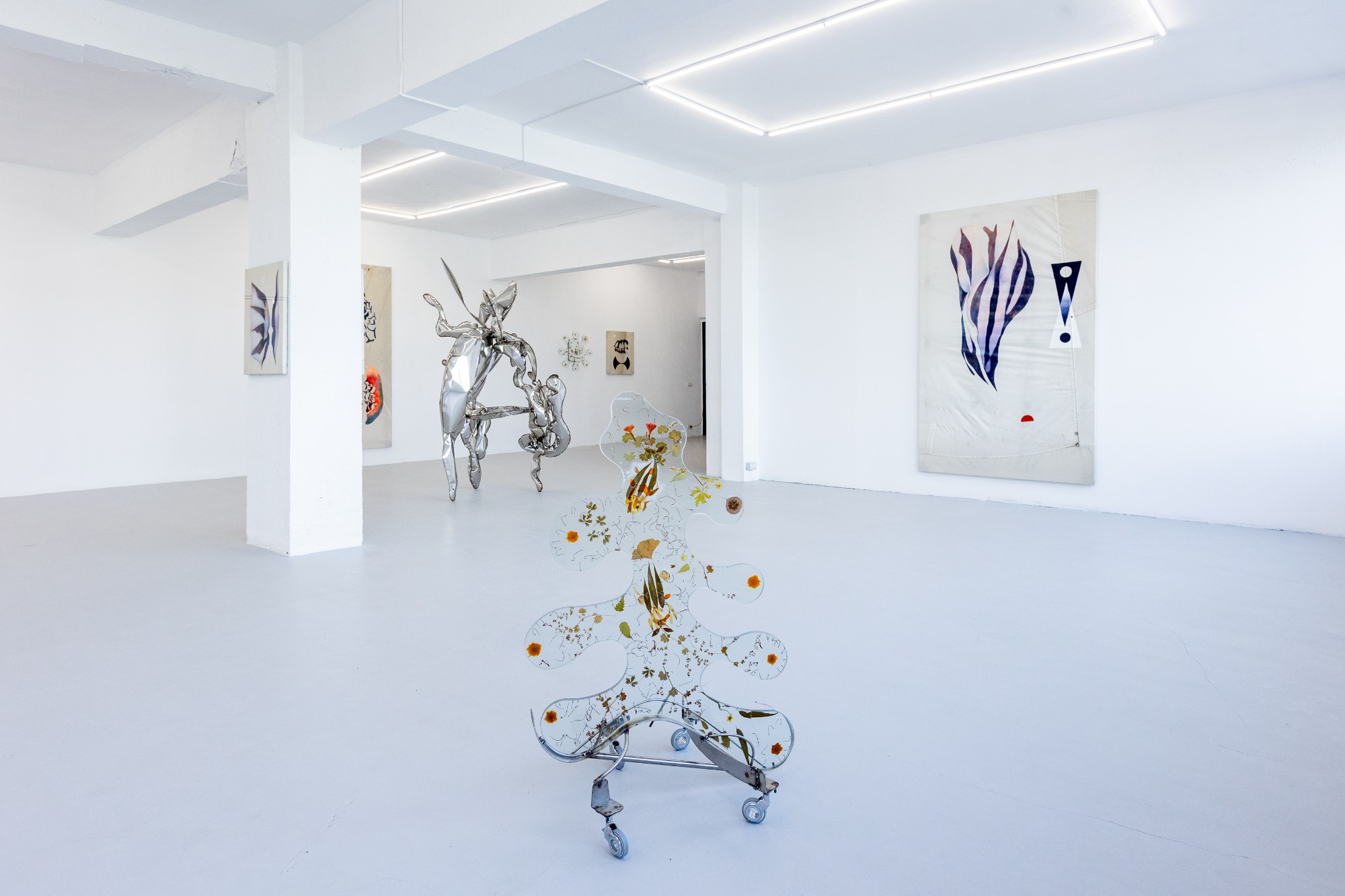
Installation view: Justin Orvis Steimer
& Ovidiu Toader
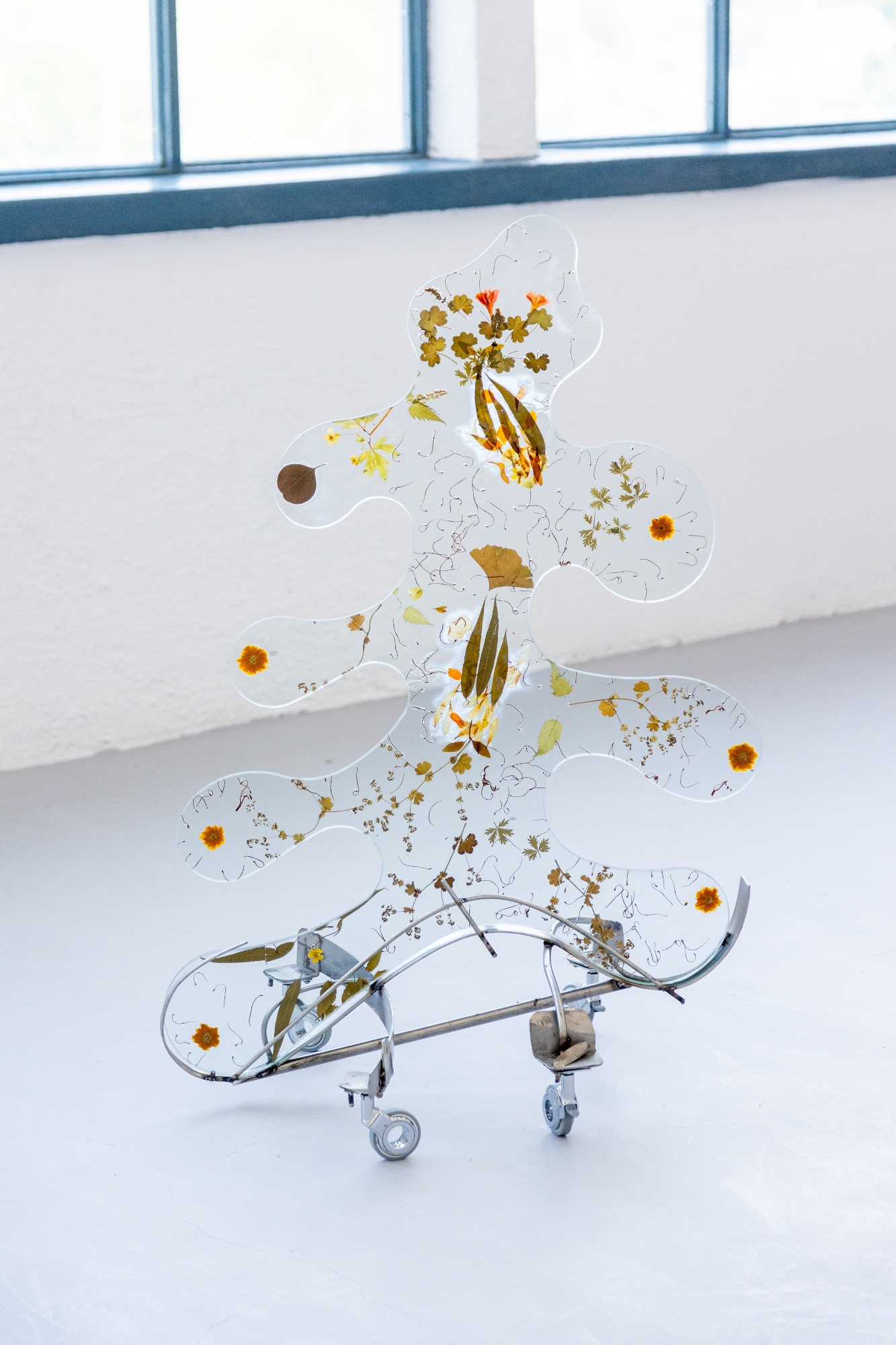
Ovidiu Toader, Chest on the Mother Ship, 2025,
Stainless Steel, bulletproof glass, pressed flowers, 107 × 73 × 57
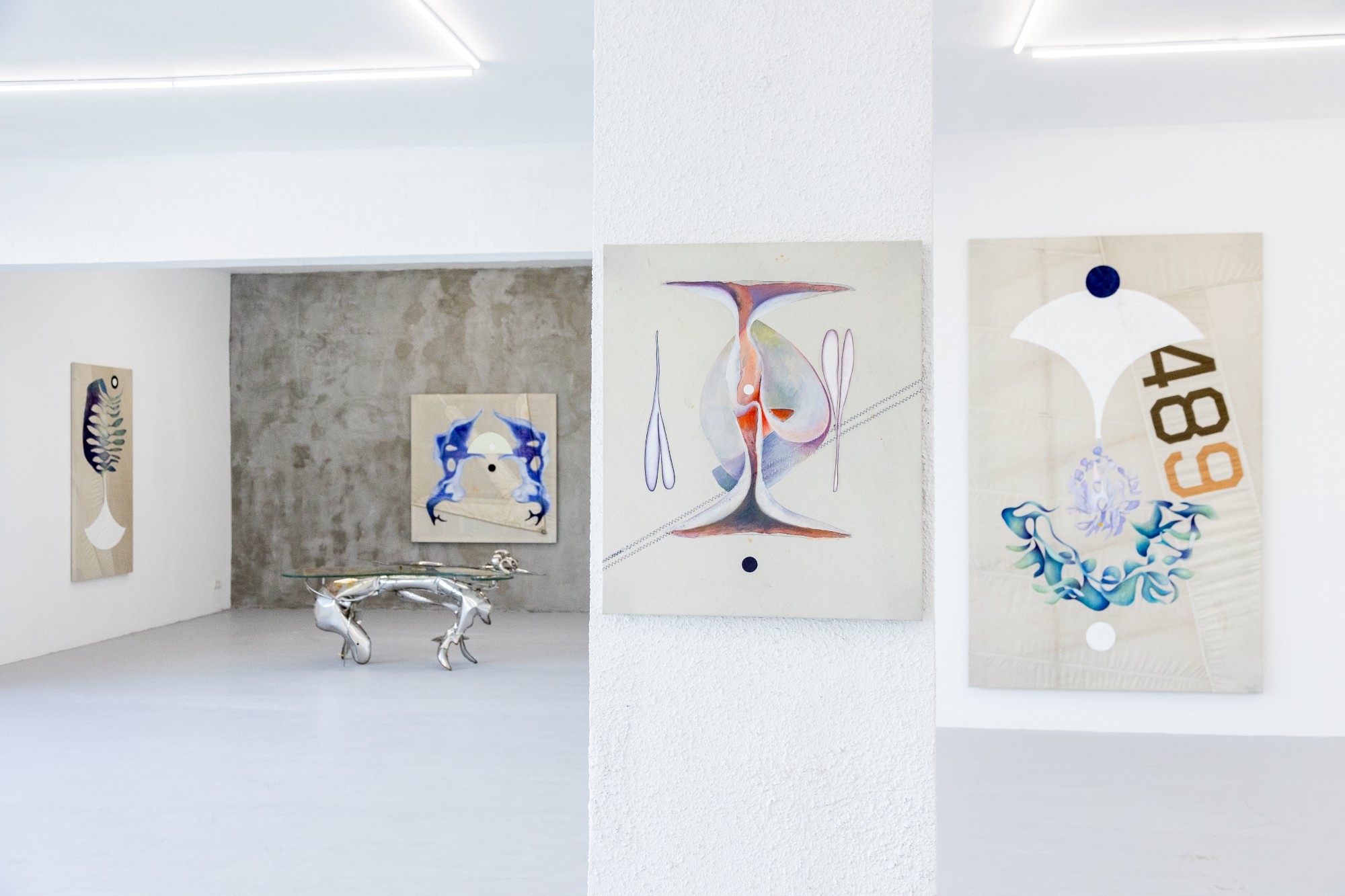
Installation view: Justin Orvis Steimer
& Ovidiu Toader
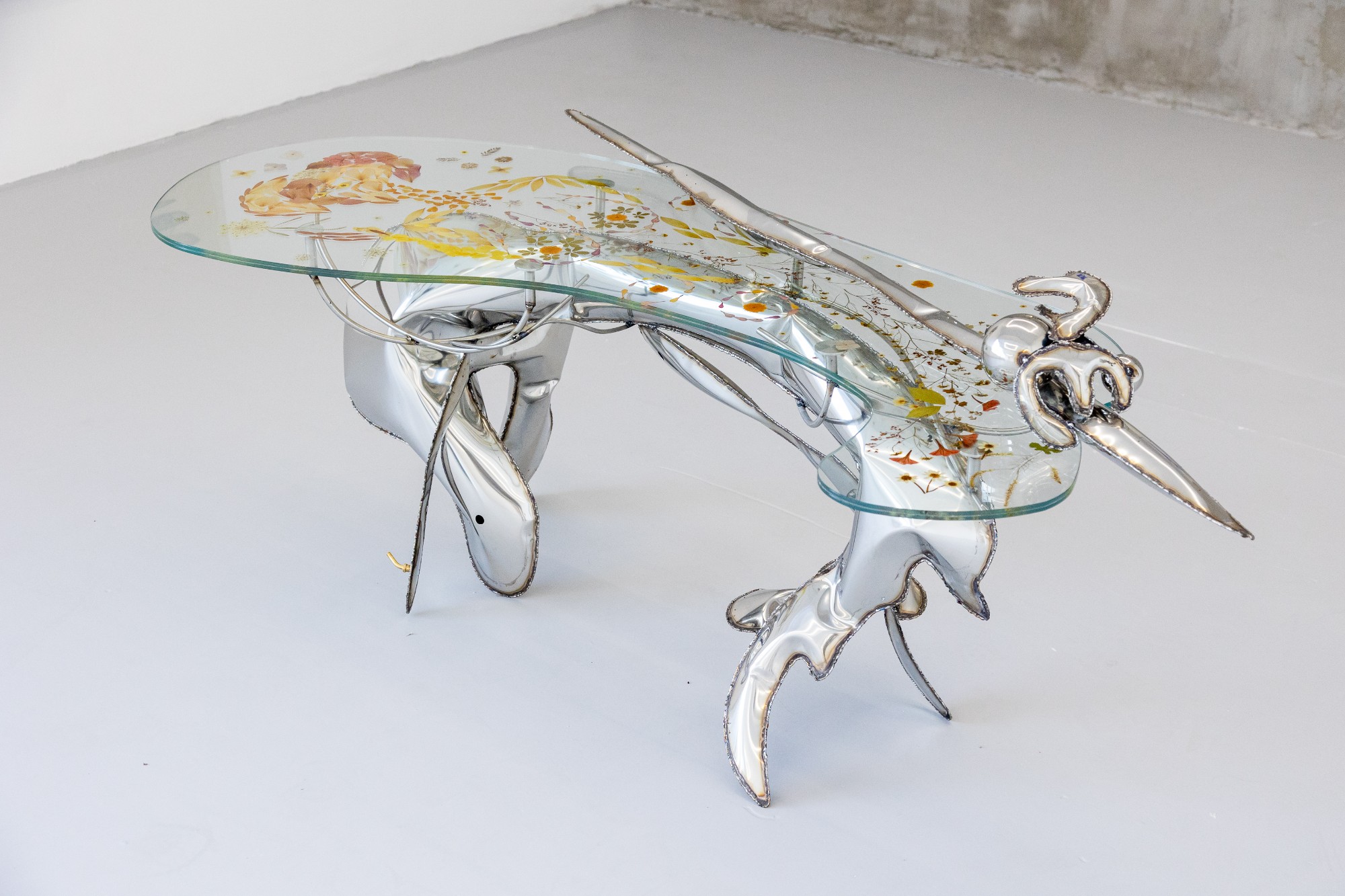
Ovidiu Toader,
The Mother Ship, 2025
Stainless Steel, bulletproof glass, pressed flowers, 174 × 66 × 70 cm
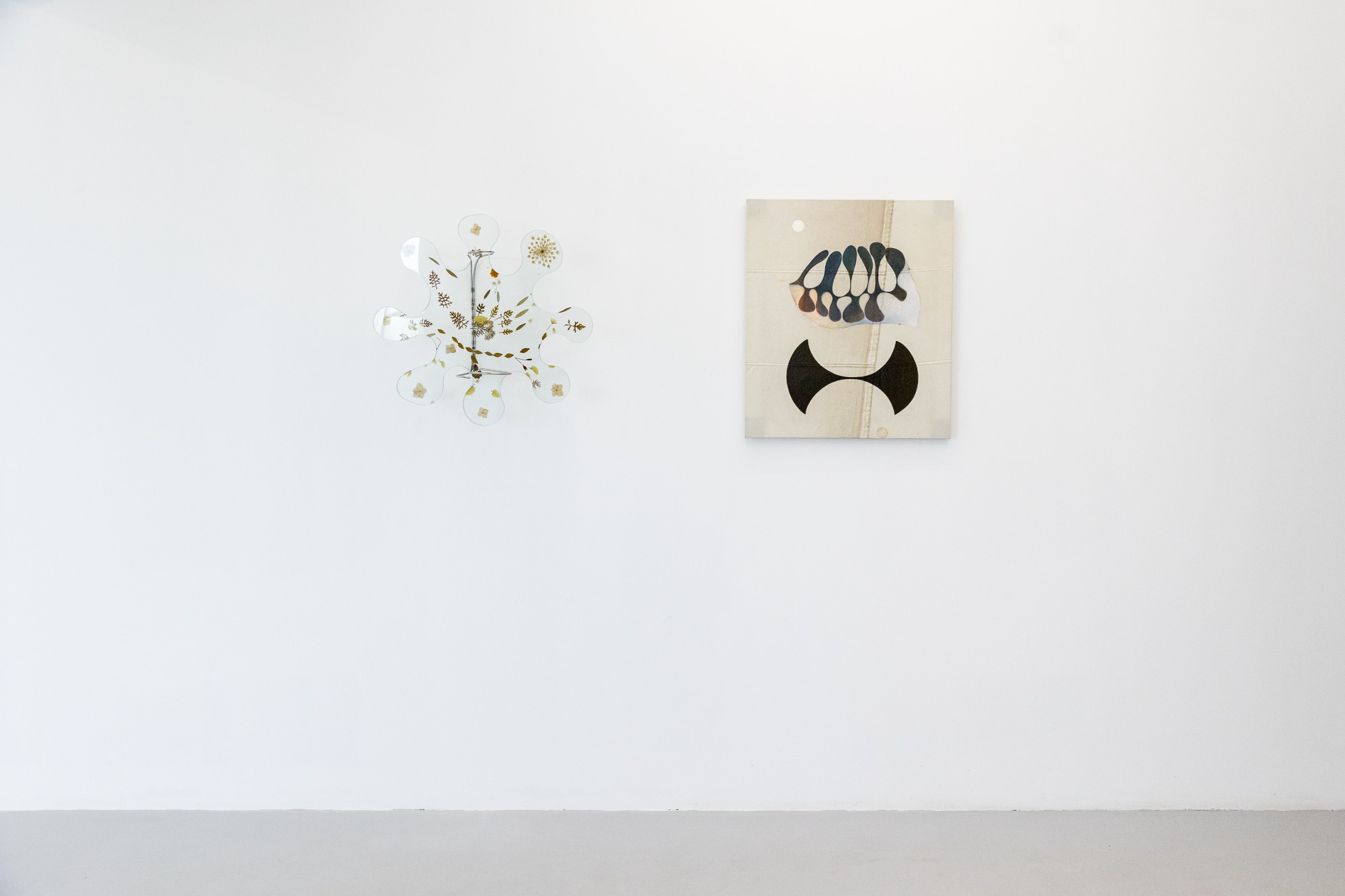
Installation view: Justin Orvis Steimer
& Ovidiu Toader
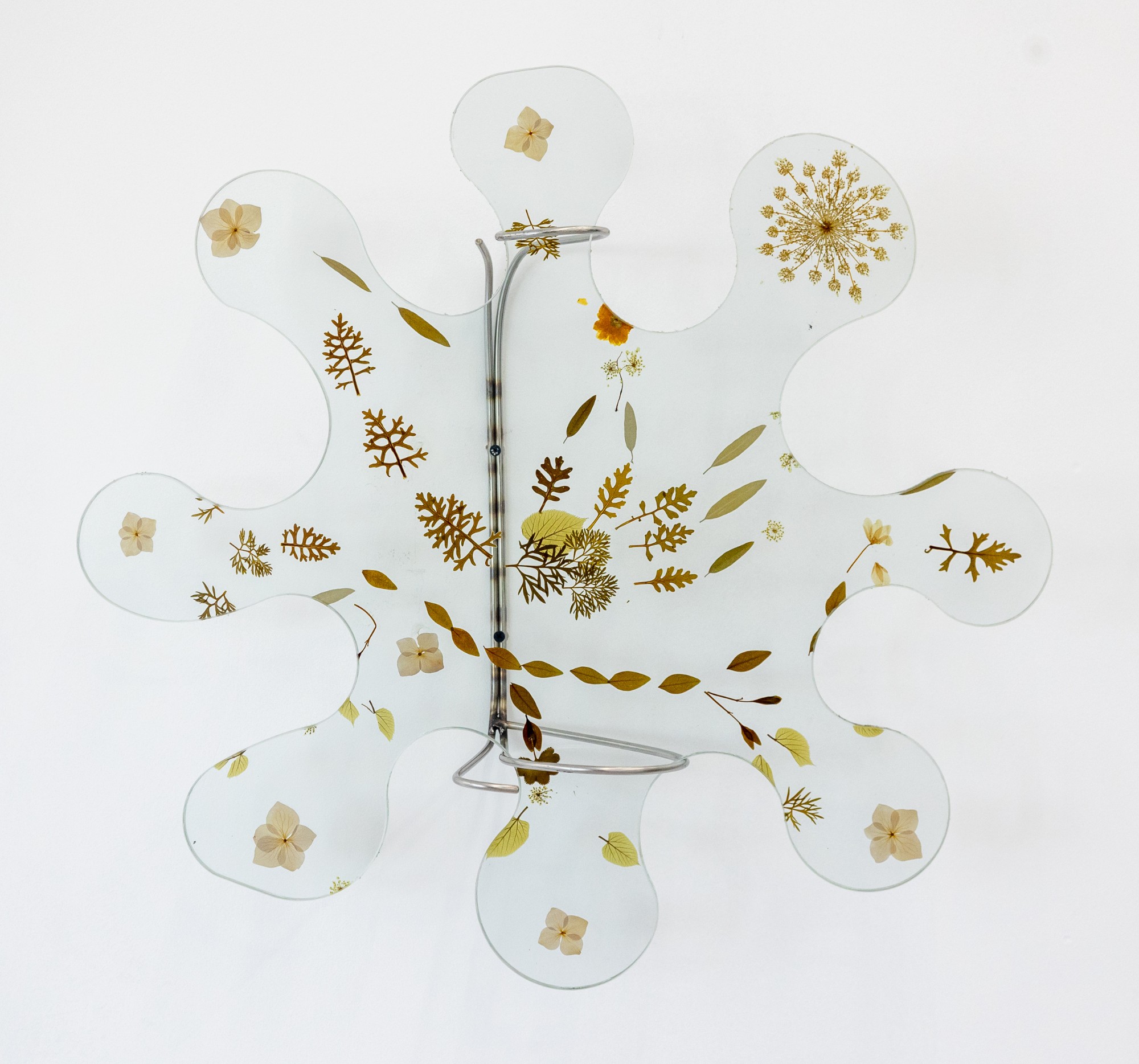
Ovidiu Toader, Flower of Life 2, 2025, Stainless Steel, bulletproof glass, pressed flowers, 66 × 70 cm
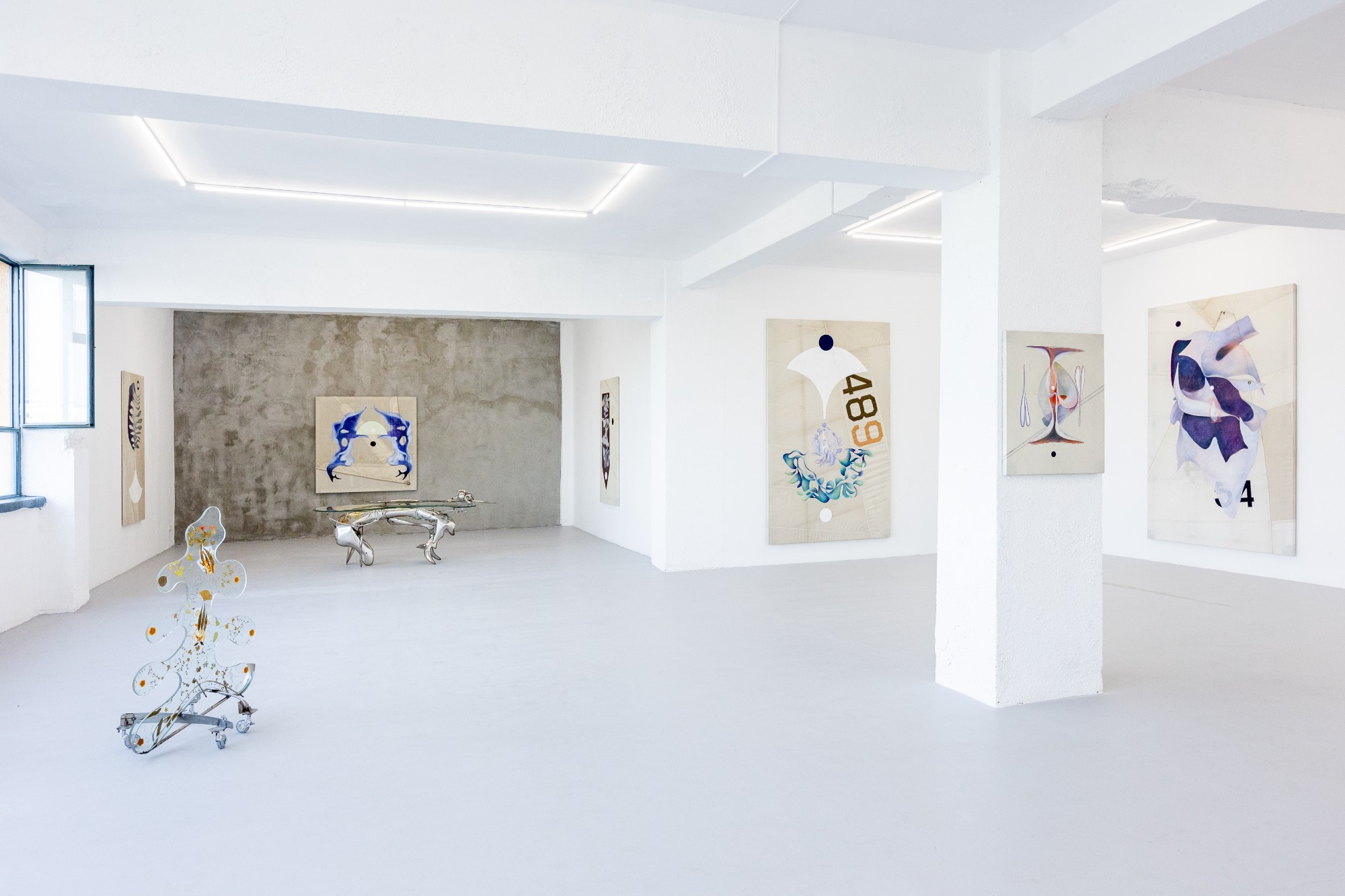
Installation view: Justin Orvis Steimer
& Ovidiu Toader
Emerging from distinct, yet parallel approaches to material and perception, this exhibition brings together the practices of Justin Orvis Steimer (b. 1981, Colorado, United States) and Ovidiu Toader (b. 1991, Braşov, Romania)—two artists who operate at the threshold of the seen and the unseen; the grounded and the transcendent. What unites them is not a shared aesthetic or subject of research, but a sustained, embodied engagement with material as a site of inquiry—an entry point into systems that often evade straightforward representation.
Steimer moves through the intangible. His practice begins with that which is invisible to the eye—energies, frequencies—seeking to give them form. A ritualistic quality permeates throughout his process: he draws color from raw pigments, stretches canvases from reclaimed and gifted textiles—in this case old boat sails—and responds intuitively to marks and materials that carry emotional or symbolic weight. His paintings unfold as visual records of metaphysical transmissions, guided by sound, instinct, and relational exchange. With freehand gestures and muscle memory drawn from a love for constant drawing, Steimer transposes space, time and essence, eschewing representation in favor of receiving and revealing a channeled truth.
Toader, in contrast, works inside the physical. His practice—spanning sculpture, drawing, and immersive spatial compositions—is born out of prolonged encounters with matter. Whether metal, stone, water, or earth, each element is approached for its internal logic and behavior. The works are durational, shaped by years of handling and learning the materials he uses. His environments operate like slow-moving tectonic narratives: speculative yet grounded, poetic yet precise. They prompt a reconsideration of time as a material construct—one shaped by process, transformation, and duration rather than linear progression. The material world becomes a lens through which to reimagine human existence and our potential futures.
In spite of visual synchronicity, the dialogue between Toader and Steimer offers distinct subjective truths—while one carves into the density of matter; the other pulls the incorporeal into visible register. They are like two travelers bumping into one another and learning they speak the same language. Bound by their shared discovery and a reverence for the material as a site of communication. Their works unfold as layered engagements—with process, manifestation, and the vast, often mysterious forces that shape the world we inhabit.